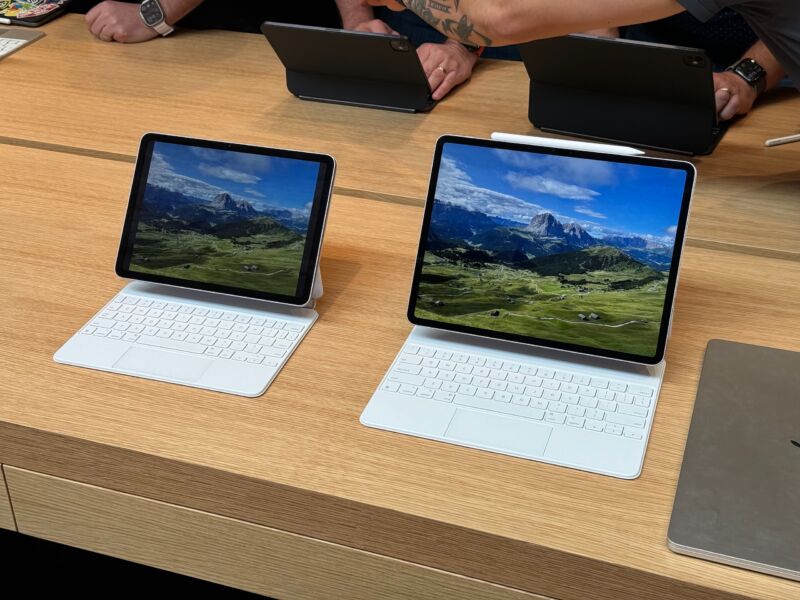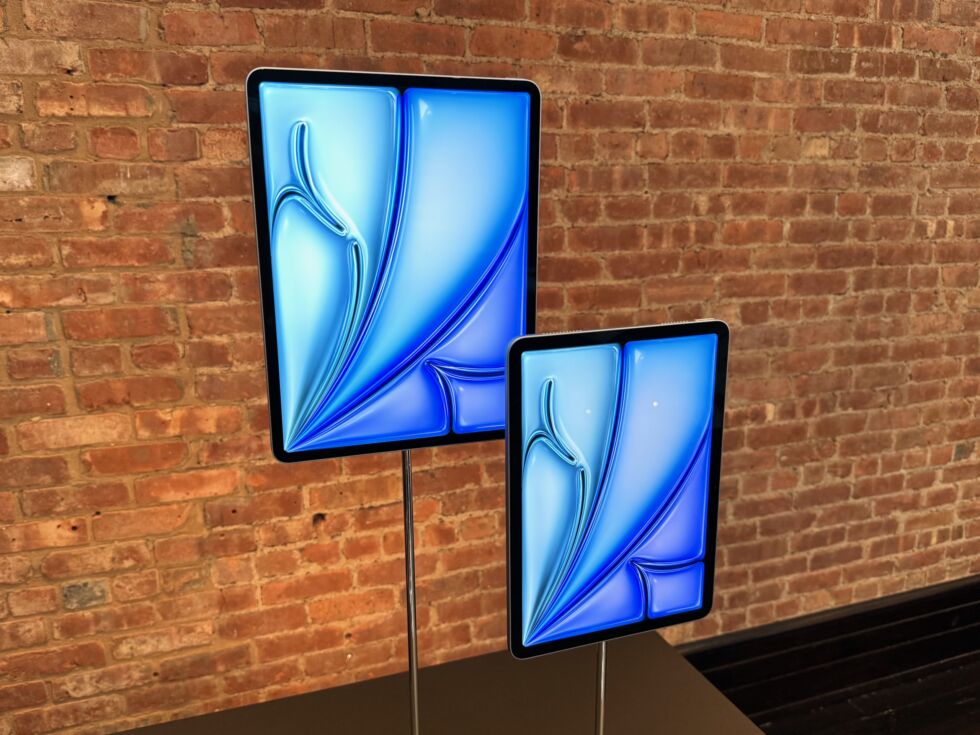
Andrew Cunningham
Apple has a new lineup of iPad Pro and Air models for the first time in well over a year. Most people would probably be hard-pressed to tell the new ones from the old ones just by looking at them, but after hands-on sessions with both sizes of both tablets, the small details (especially for the Pros) all add up to a noticeably refined iPad experience.
iPad Airs: Bigger is better
But let’s begin with the new Airs since there’s a bit less to talk about. The 11-inch iPad Air (technically the sixth-generation model) is mostly the same as the previous-generation A14 and M1 models, design-wise, with identical physical dimensions and weight. It’s still the same slim-bezel design Apple introduced with the 2018 iPad Pro, just with a 60 Hz LCD display panel and Touch ID on the power button rather than Face ID.
So when Apple says the device has been “redesigned,” the company is mainly referring to the fact that the webcam is now mounted on the long edge of the tablet rather than the short edge. This makes its positioning more laptop-y when it’s docked to the Magic Keyboard or some other keyboard.
The most welcome change to the Air is the introduction of a 13-inch model (blessedly, no longer “12.9 inches”). It looks like the old 12.9-inch iPad Pro design from circa 2018 but with the simpler single-lens 12 MP camera and the Touch ID button rather than the Face ID sensor.

Andrew Cunningham
With the iPad Pro and the Air next to each other, it’s clear which has the superior screen—the 120 Hz refresh rate of ProMotion and the infinite contrast of OLED are definitely major points in the Pro’s favor. But if you’re just looking for a big screen for watching videos, reading books, or playing games, or if you’re just looking for a general-use laptop replacement tablet, Apple is still using a great 60 Hz LCD panel here. And the $799 price tag is considerably lower than any of Apple’s past 12.9-inch iPad Pros.
Like the 15-inch MacBook Air, it’s a way for people to get a bigger screen without paying for advanced screen technologies or faster processors if they don’t want or need them. It’s hard to find a downside to that, as long as you’re OK with iPadOS’ differences and restrictions relative to macOS.
